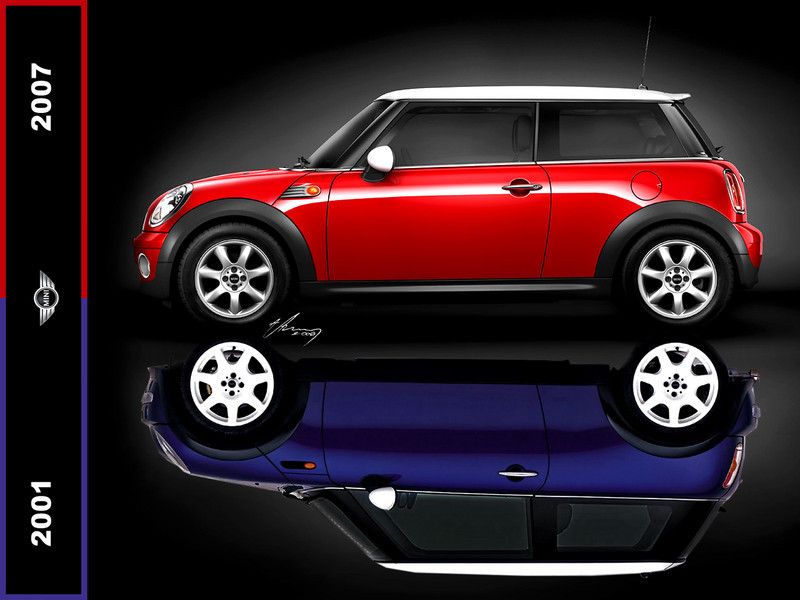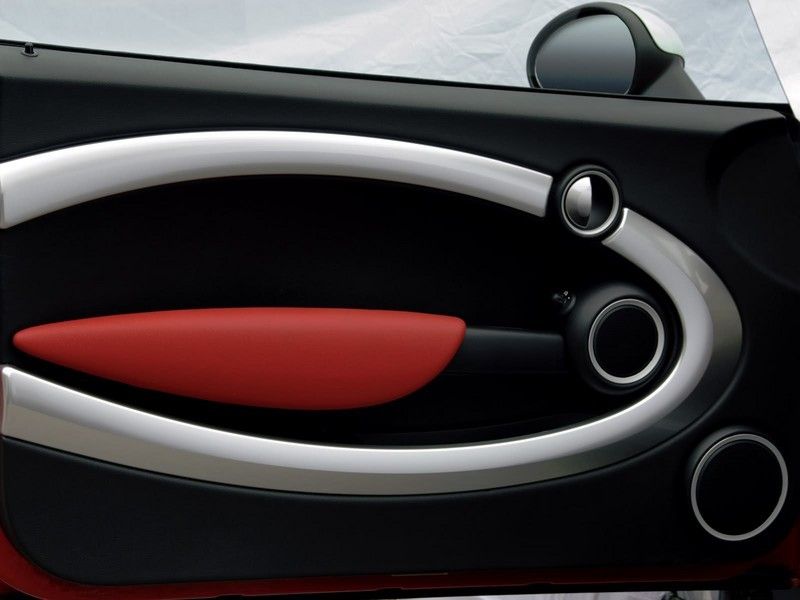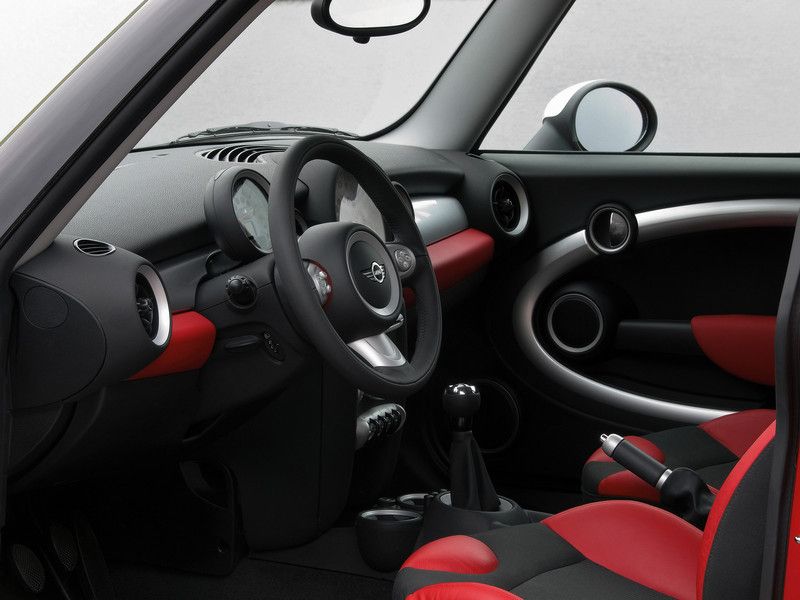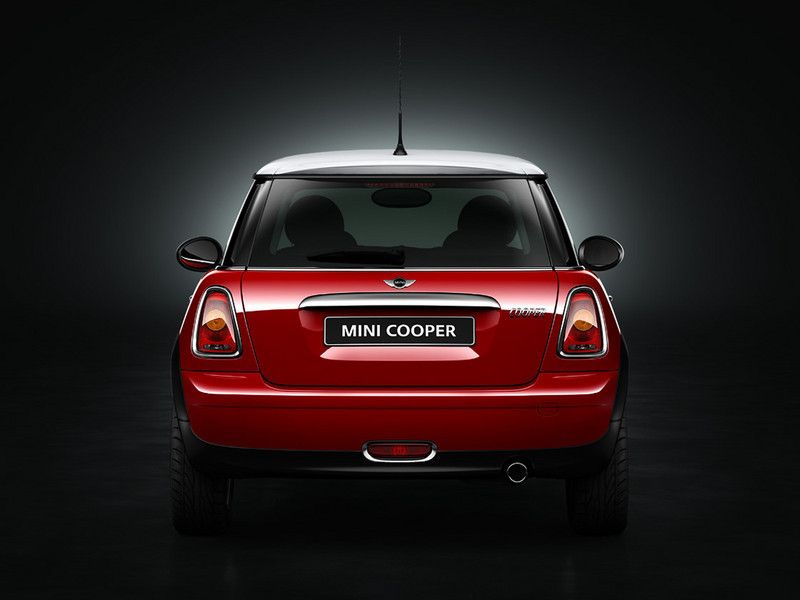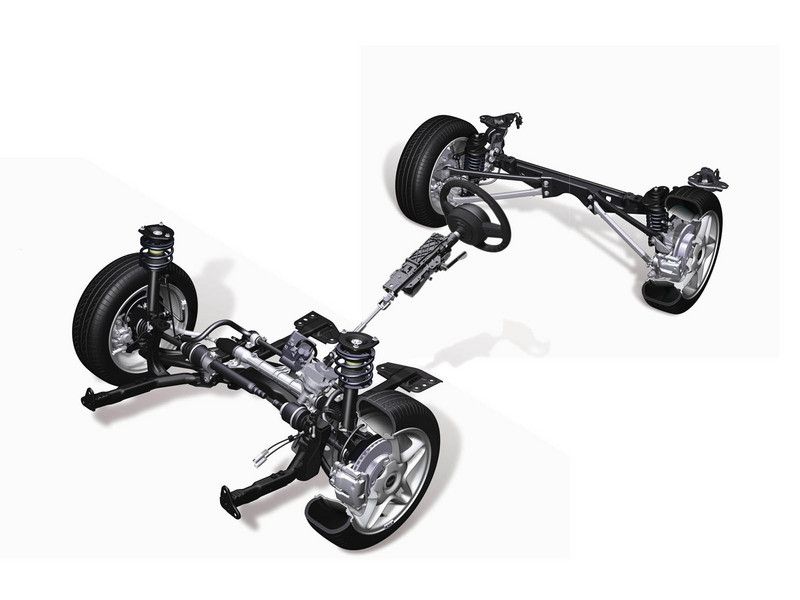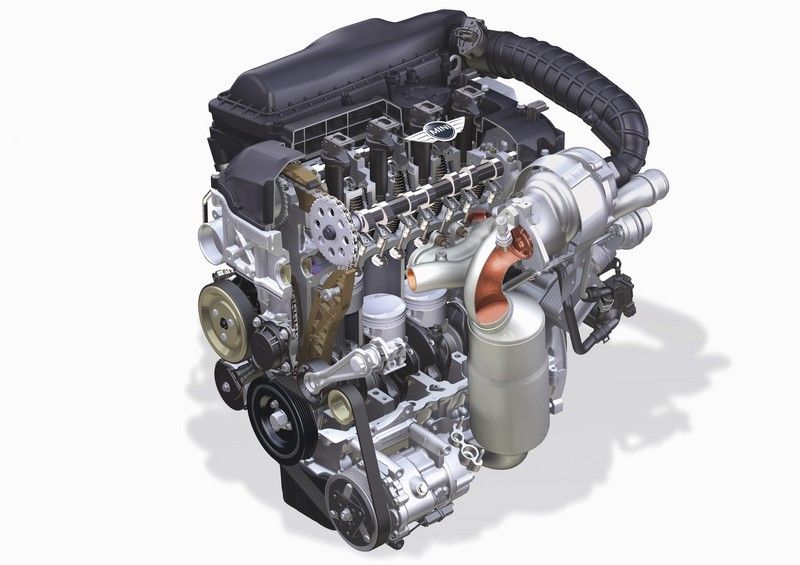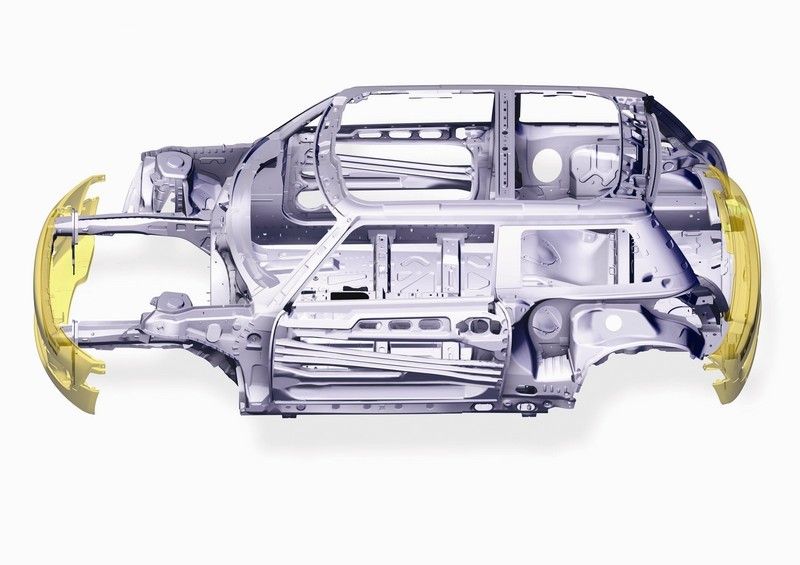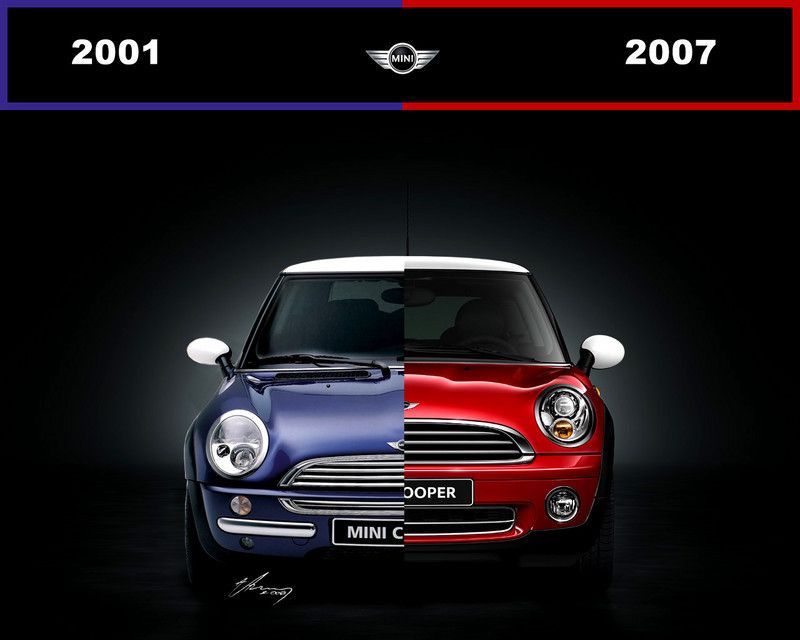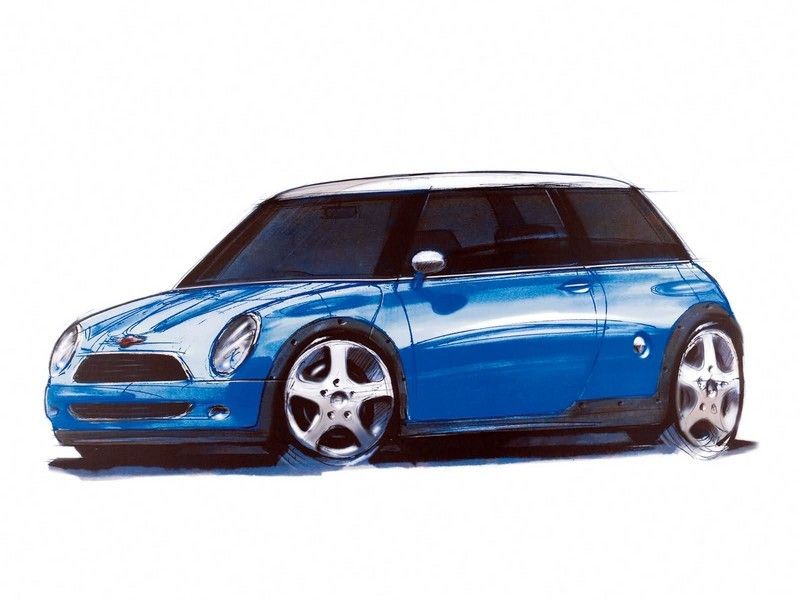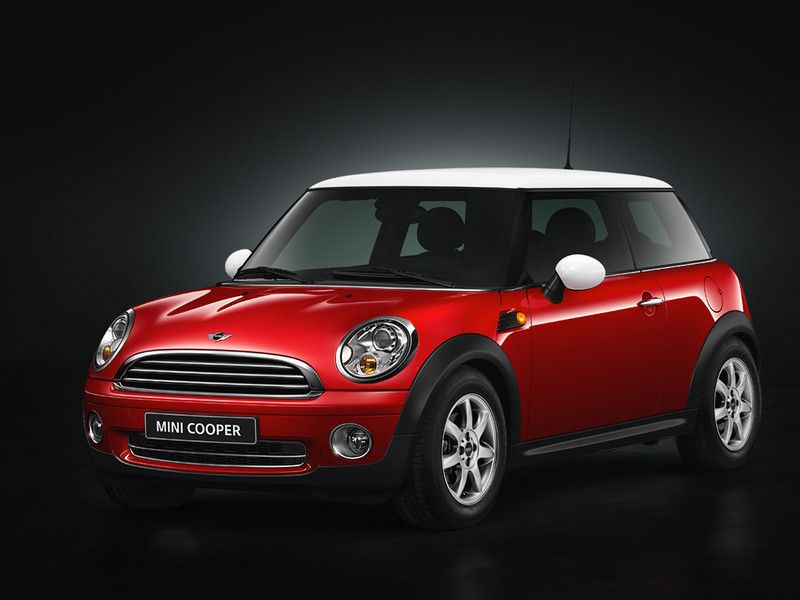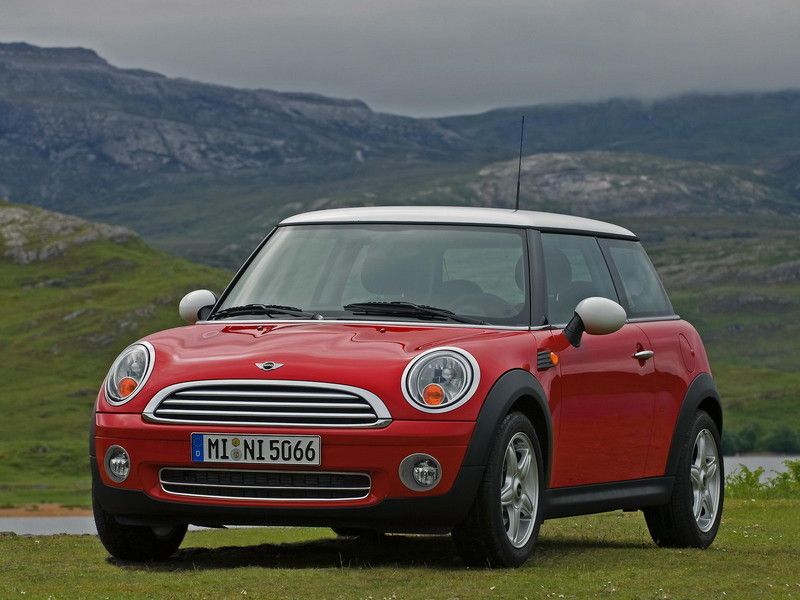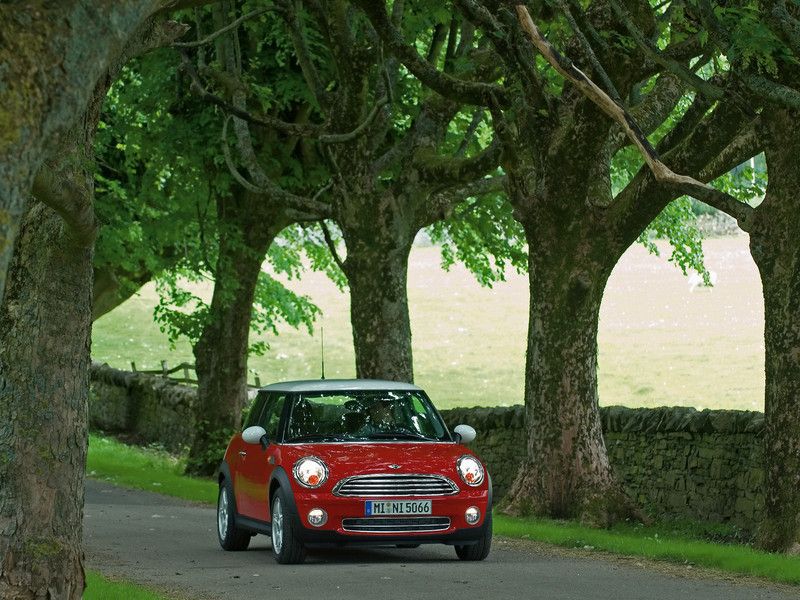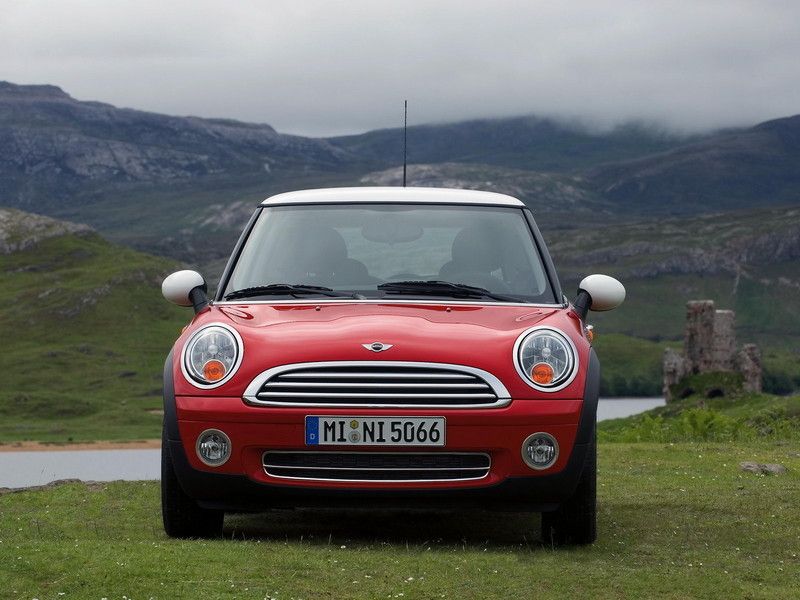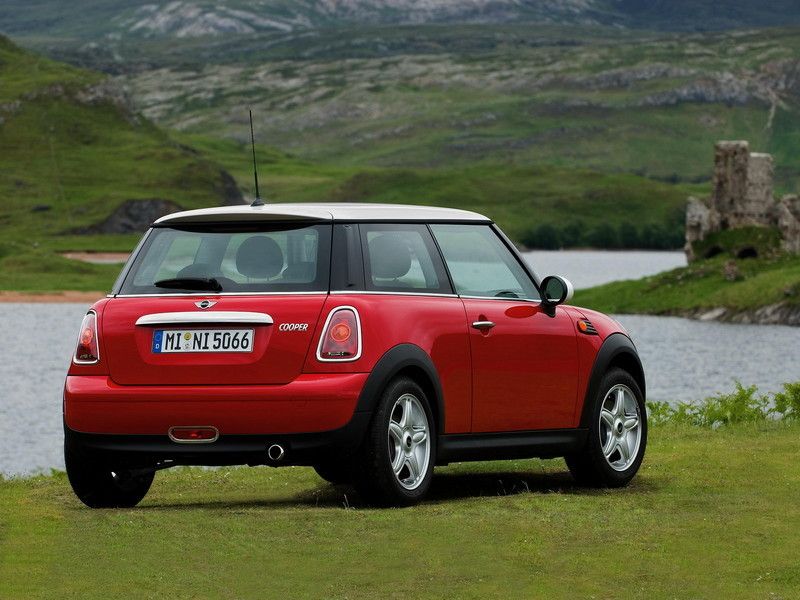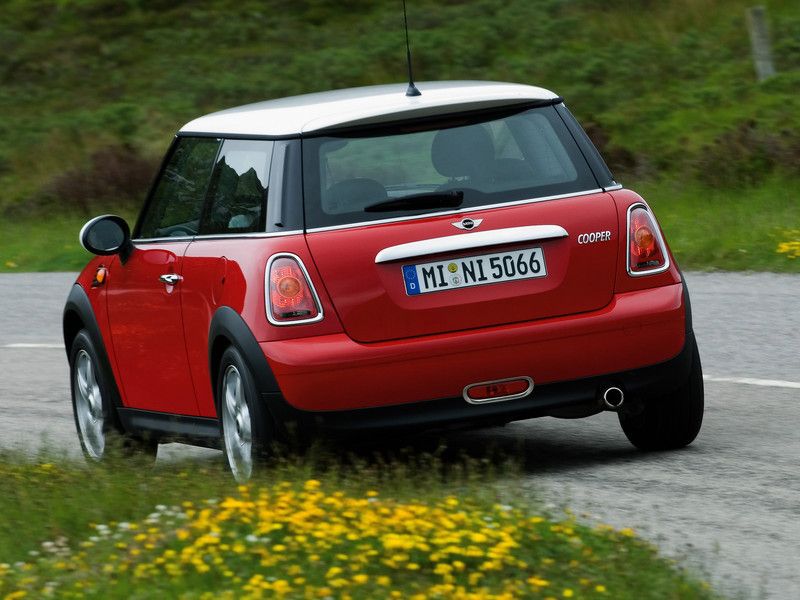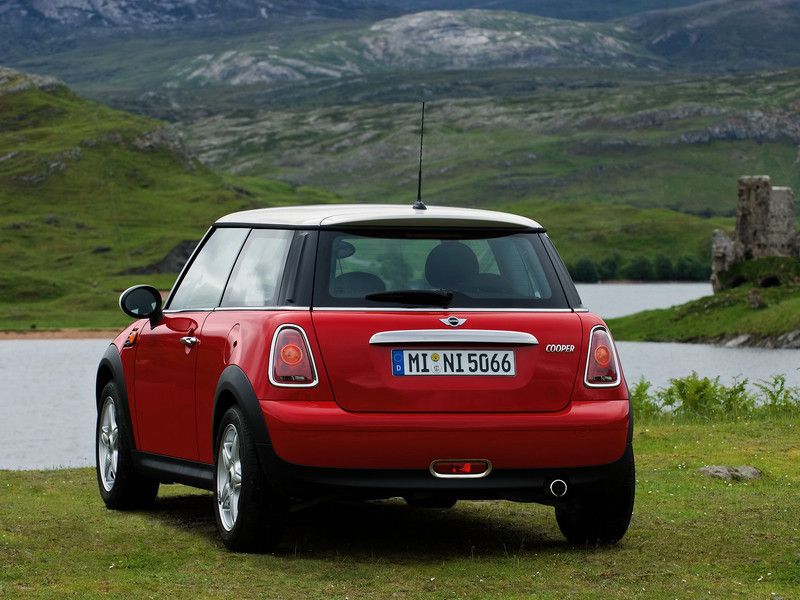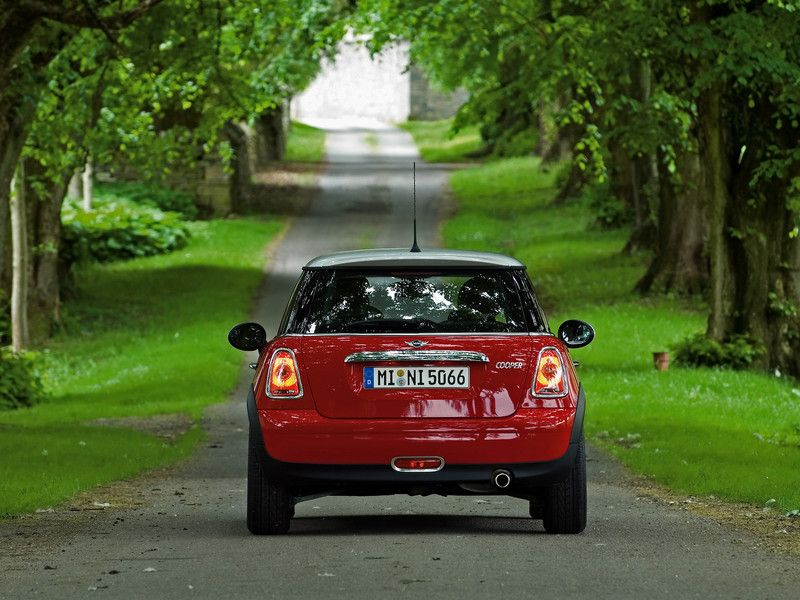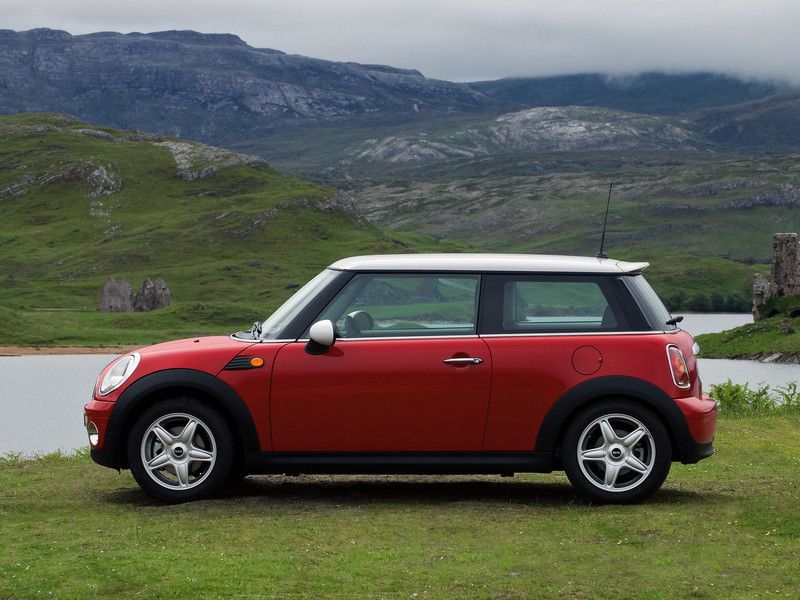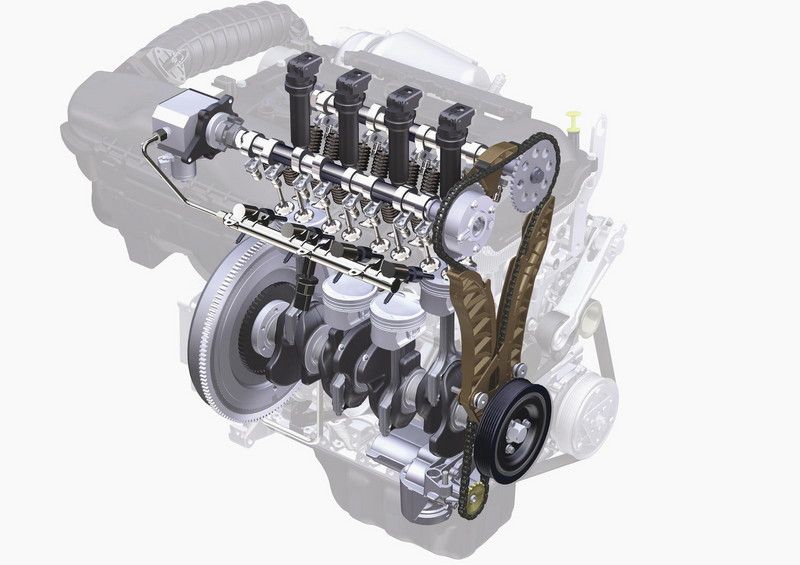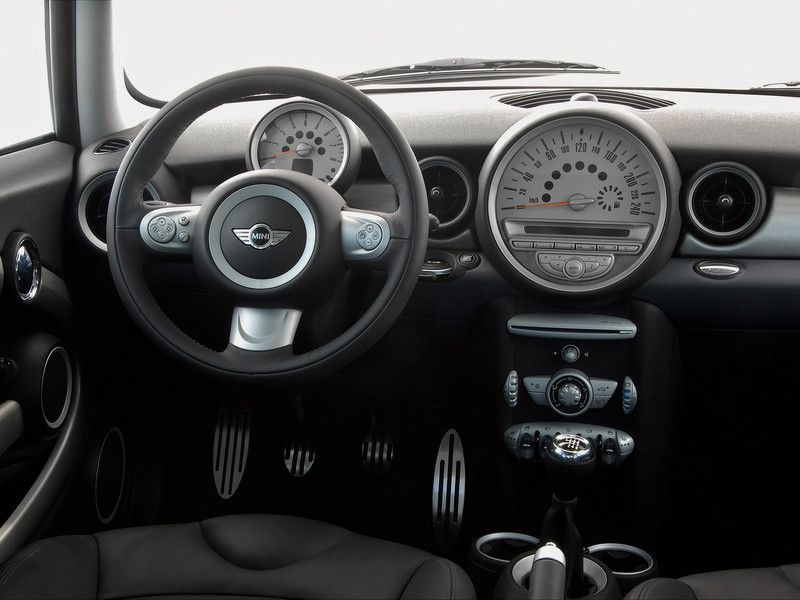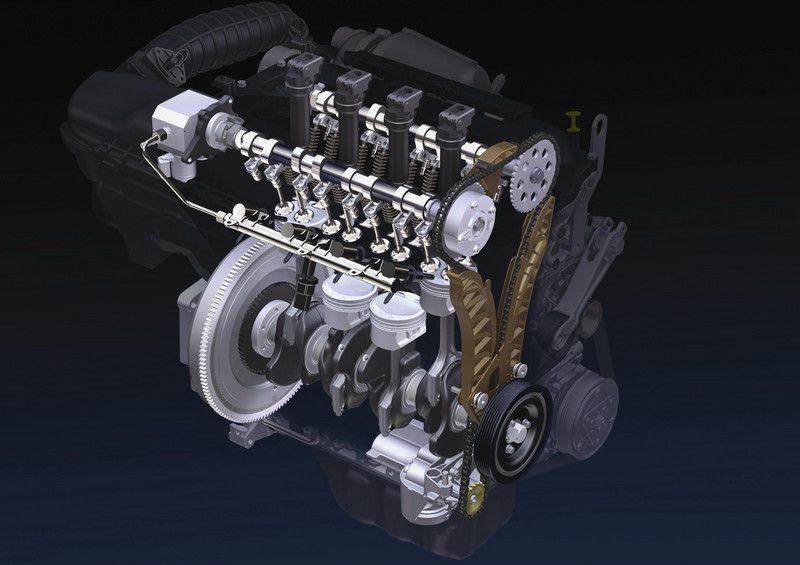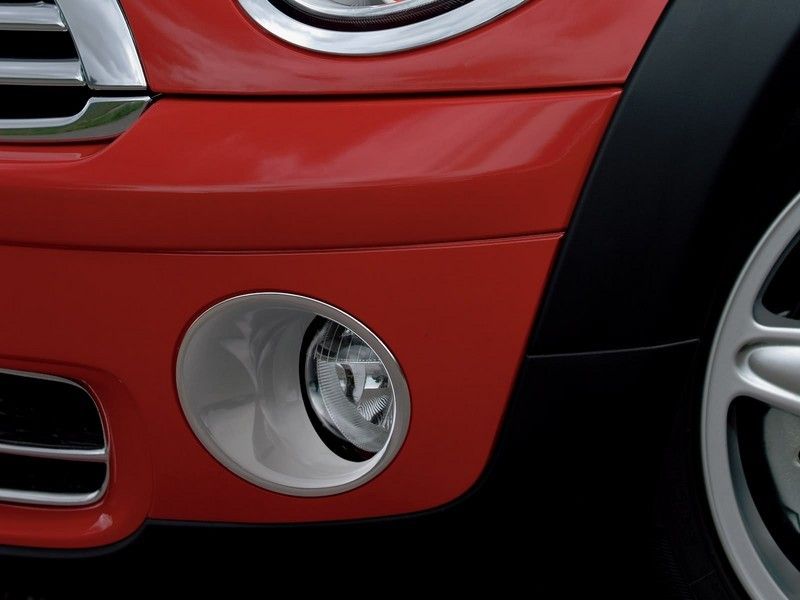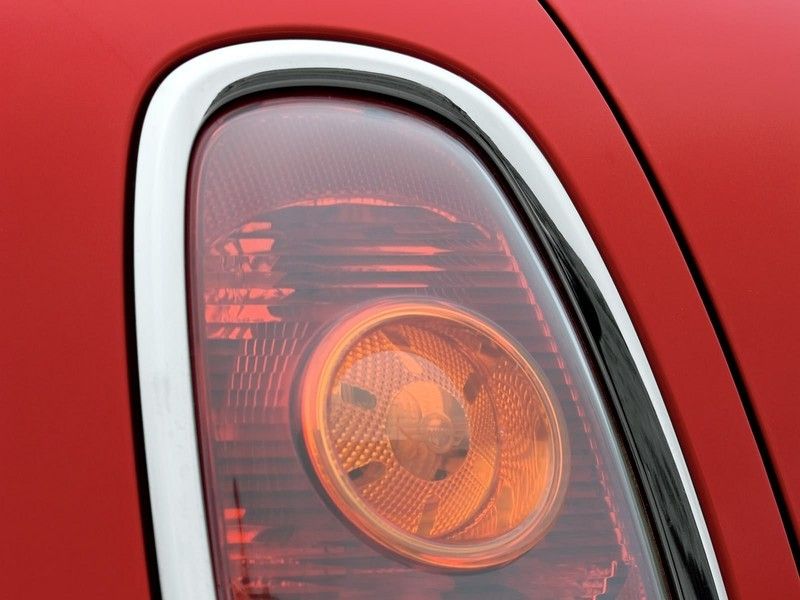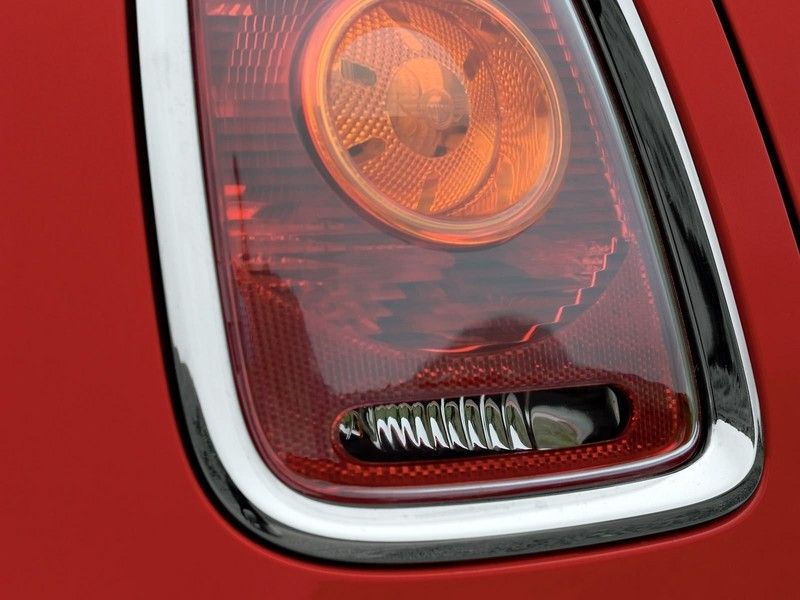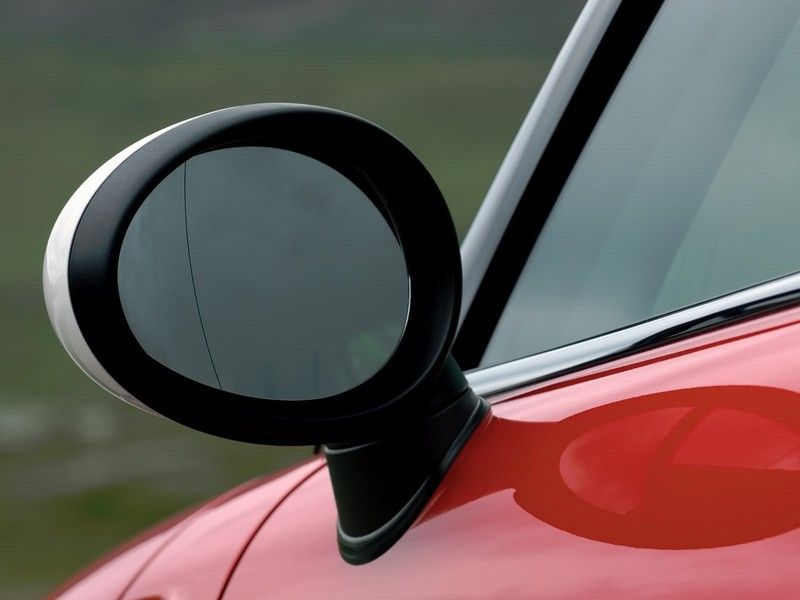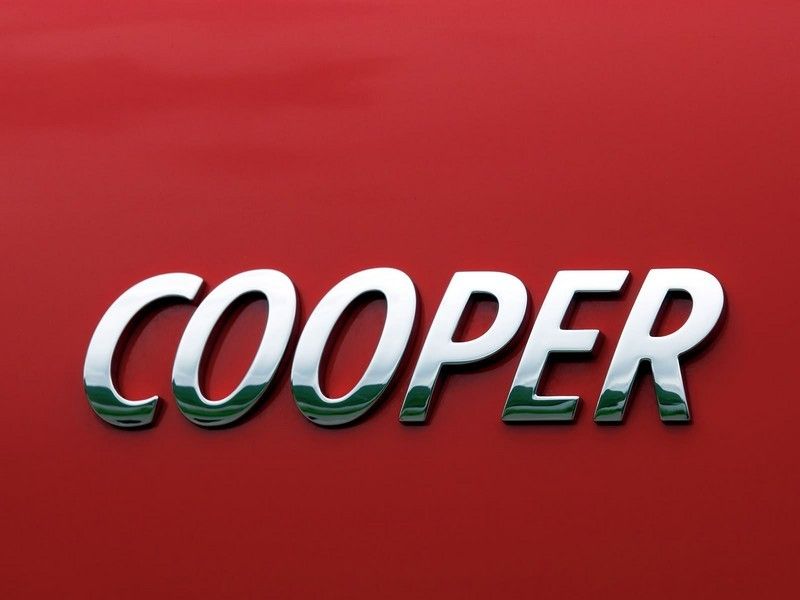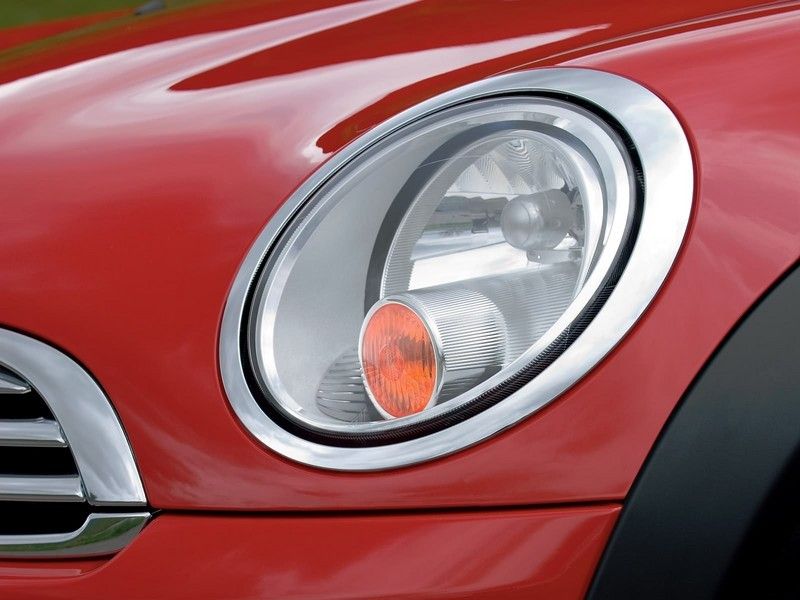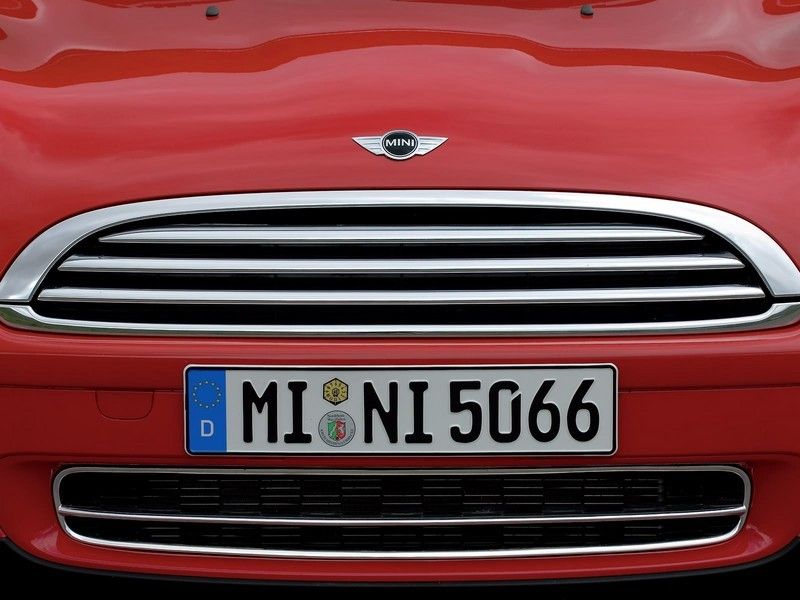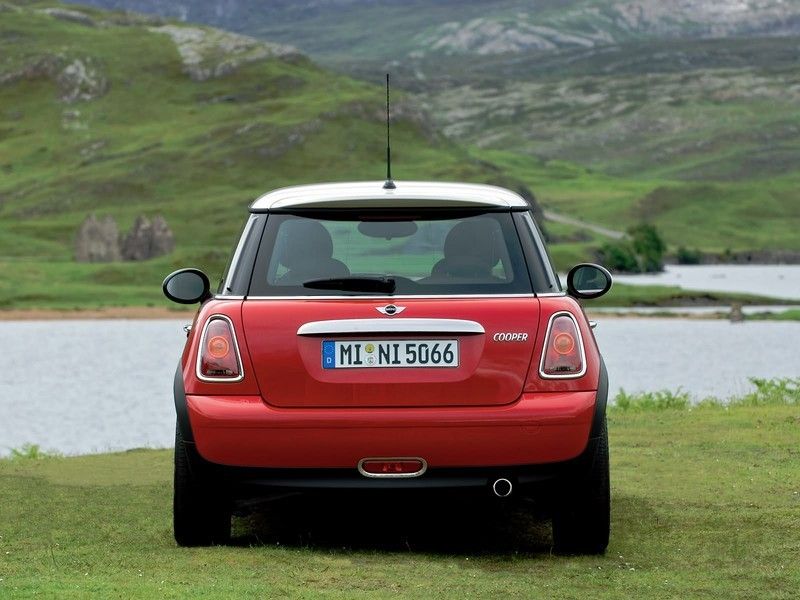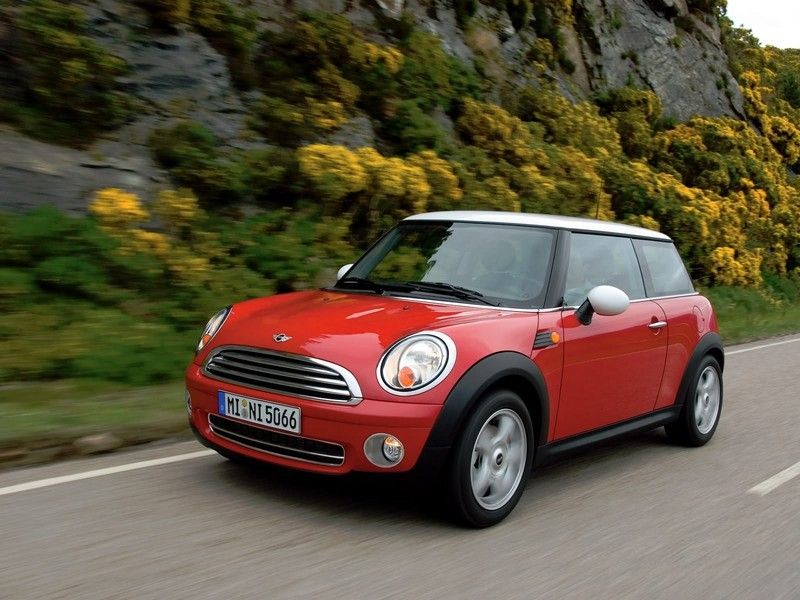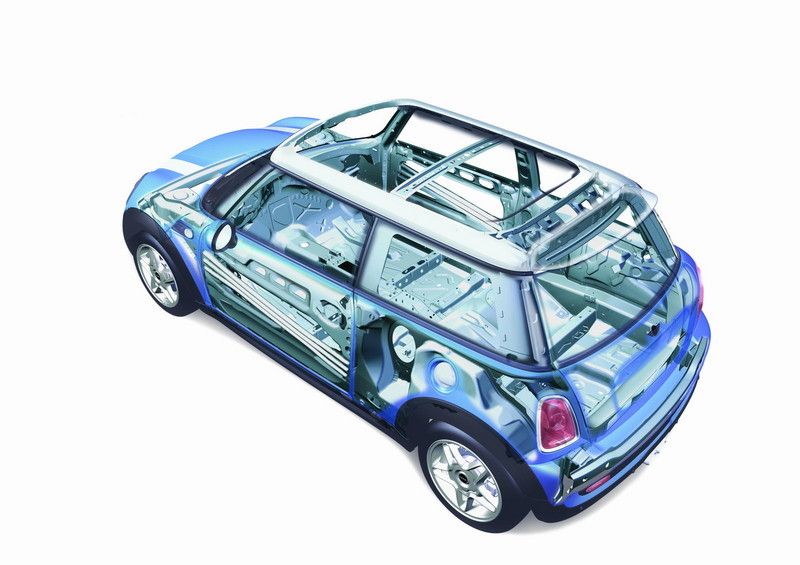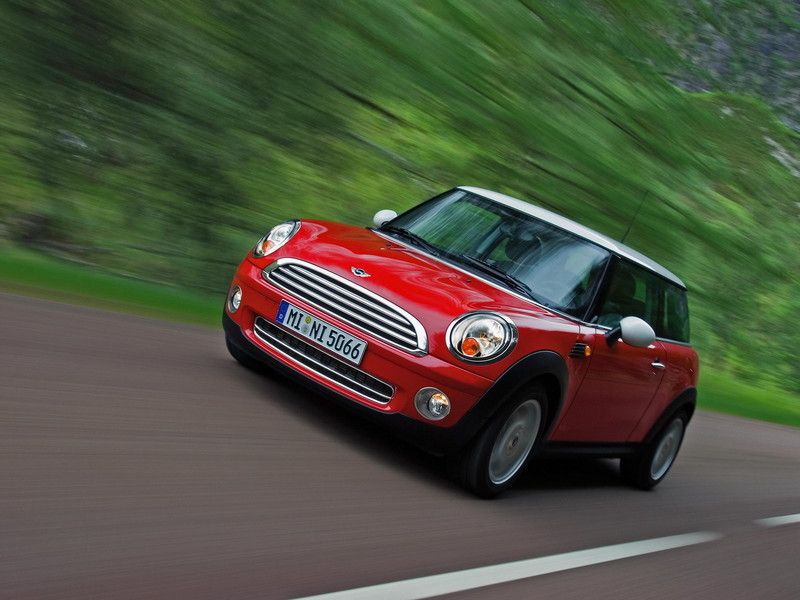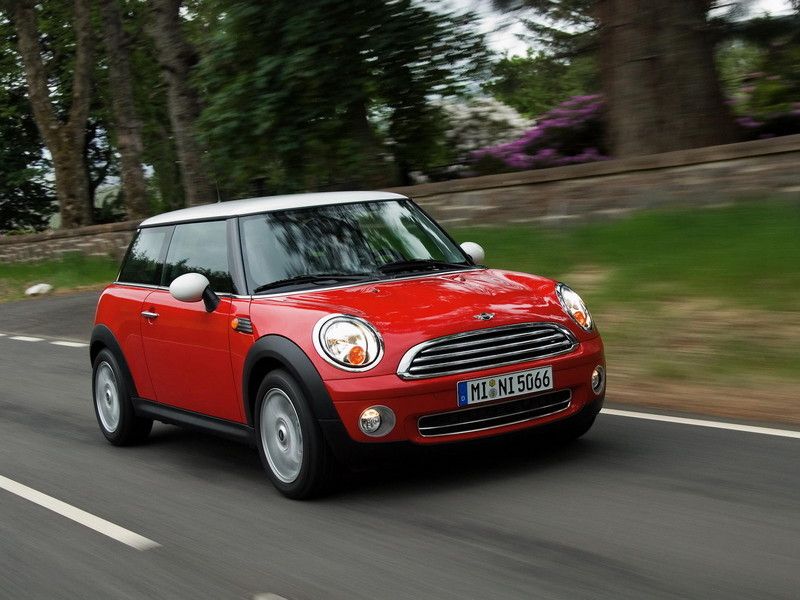We have reached the time when the MINI revolution had to be continued with an evolution. The highly successful MINI produced by BMW starting with the year 2000 will come as a 2007 model with a completely new skin, but perfectly maintaining the original appeal and charisma of the previous installment. Without fail improved and polished in design, the new MINI presents an all-new drive-train technology for even superior agility. Due to hit the showrooms in late 2006, the new MINI Cooper will feature a 1.6-liter normal-aspiration engine offering 120 bhp.
2007 MINI Cooper
- Make: Array
- Model: 2007 MINI Cooper
- Engine/Motor: Inline-4, DOHC, 16 Valves
- Horsepower: 120 @ 6000
- Torque: 118 @ 4250
- Transmission: 6-Speed Manual
- [do not use] Vehicle Model: Array
The new MINI is personified, as its previous instalments, by the very short front and rear body overhangs and by the large wheels emphasizing the athletic sideline of the vehicle. Elements easily recognisable from the MINI pedigree are the distinctive round highlights, the hexagonal radiator grille, the entire “band” of glass surrounding the passenger compartment, as well as the oblique seam between the engine cover and the lateral direction indicators or the sizing, positioning and arrangement of the upright rear light units.
Interesting fascia elements are the position lights and the fog-lamps placed beneath the main front-lights. These additional light-units are interest spots in the face of the new MINI, while the direction change lights are now included in the main headlight units.
The new R4 petrol engines are completely new, developed fromscratch and boast a significant number of groundbreaking technical features. The cockpit is also brand-new in design, while the outside has been through a procedure of design evolution preserving the unmistakable character of the MINI. The specific elements of the car’s body and interior are now even more persuasively reflecting the specific character of the brand. Together with the improved chassis and suspension, the modern engines further enhance the already legendary go-kart feeling typical to the modern MINI.
However, not only the design and the drive technology are improved for the new model. In addition, the extensive range of standard equipment and the classy finish make the new MINI so exclusive, and meet the premium standards of the brand.
The 2007 MINI will offer brand-new engines of the highest calibre. After the initial introduction in late 2006, the MINI will offer two petrol engines – a 1.6-litre NA power unit developing 120 bhp for the MINI Cooper and a turbocharged version providing a more impressive 175 bhp for the MINI Cooper S.
The range base model, called as usually the MINI One, will follow in the first half of 2007, and will equip a 1.4-liter power unit developing 95 bhp. The new MINI Diesel featuring the most sophisticated and refined turbo diesel technology will eventually join the range later.
History
The Mini is the small car icon of the 1960s. It was produced by BMC (British Motor Corporation) starting with 1959 and was the first car to get the front-wheel-drive. This space saving solution influenced all the manufacturers, as nowadays FWD is the most popular drive-train layout. The new MINI was launched in 2001 and got to replace the legend with updates for the 21st Century.
The revolutionary design of the Mini was created by Sir Alec Issigonis (1906–1988), considered a visionary in industrial transportation. It was intended as an affordable vehicle in response to the oil crisis. Along its production period it was built at the Cowley plants in the United Kingdom, and afterwards in Australia, Belgium, Chile, Italy, Portugal, South Africa, Spain, Uruguay and Venezuela.
After production of the classic Mini ended in 2000, BMW, the new owner, announced a successor to the Mini – which was called the MINI (written in capital letters).
The MINI shares the FWD architecture of its predecessor, but is no longer an affordable vehicle. It seems to have also inherited the sporty and luxurious genes of the BMW premium brand. With top technology for this vehicle class, the MINI is now an object of fashion, oriented towards the pleasure of driving. In comparison with classic, the new car is around 21 in longer, 12 in wider and weighing 2300 lbs, rather than 1450 lbs. All of that and the departure from the minimalism of the classis become objectionable for some Mini fans. Market success proves that the new car is fitted for the 21st Century when comfort, safety and environment requests are harsher.
Click here to read our complete Mini history.
Body & chassis
The principle applied by the designer team in the development of the new MINI exterior design was “From the original to the original”. Starting with the first generation of the modern MINI, the developers were successful in appropriately adapting the philosophy of the classic Mini from the ‘60s. For the next model, the designers are maintaining this forward-looking continuity approach. As Gert Hildebrand, MINI Chief Designer has stated “In its exterior design, the new MINI is an evolution of its predecessor”. The target in developing the new model was to centre even more directly on all signs of distinction, making the second modern MINI an absolutely unique car in every aspect. In addition, all of that is achieved with further enhancing performance and meeting the even stricter safety requirements that provided supplementary motives for re-interpreting the design of the car in an appropriate manner.
The fluency in design and the constant maintenance of long-established design icons guarantee from the beginning that the new MINI is instantly recognised and from any perspective as the true original. The specific and emotional design language of the car pursues numerous elementary symbols originating from the architecture of the human body. Therefore, now all these symbols come together in perfect concord in the new MINI.
The front fascia, for example, attracts the viewer’s attention through the open and fully alert look, while the side view displays powerful and muscular shoulders. Smooth soft-modelled lines dominate the engine compartment of the new MINI, to mention just a few examples.
Especially the lateral view of the car now even fitter and more athletic in design due to the enlarged wheels and elevated shoulder line gives the new MINI an obvious touch of maleness and adulthood all in one. The sideline rising slightly towards the rear and the discreet wedge shape created in this way also reproduce the improved driving dynamics and performance of the car.
The 2007 MINI Cooper is particularly athletic and striking in its design also from the side. Both the large wheels and minimised body overhangs create the illusion that the MINI is actually resting on its wheels. This “stance-on-the-wheels” posture has indeed been a specific feature of the classic Mini for decades and now even more so, on the modern MINI.
Another element reminiscent from the great-grandfather from fifty years ago is the oblique body seam placed between the engine compartment lid and the side direction indicator lights. The classic Mini boasted a clearly visible welding seam at this point. Further design marks are the chrome-plated door handles and the direction indicator lights positioned in the front side panels.
Customisation of the new MINI is available via the extensive range of paintwork colours: The new MINI will be available with no less than 12 body colours, eight of which are metallic. Two brand-new colours are Mellow Yellow and Oxygen Blue, while Chilli Red and Pepper White were already available on the former models. The metallic colours are British Racing Green, Pure Silver, Astro Black and, as new colours, Sparkling Silver, Lightning Blue, and Nightfire Red.
Vehicle Dimensions
Length 145.6 in
Width 66.2 in
Height 55.39 in
Weight 2513 lbs
-----
Engine & transmission
The 1598 cc naturally aspirated power unit in the MINI Cooper offers a maximum output of 120 bhp at 6,000 rpm. The engine torque reaches 103 lb-ft at just 2,000 rpm, peaking at 118 lb-ft once the engine reaches 4,250 rpm. Due to the extended range of useful engine speed, this compact power unit combines superior driving pleasure with equally superior fuel economy.
This ultra-modern R4 engine features a new fully variable valve control system based on the BMW Group’s unique VALVETRONIC, innovative valve management adjusting intake valve lift and opening times within fractions of a second to current power and performance requirements. The big benefit of this arrangement is that it substitutes the conventional throttle butterfly serving on “normal” engines to translate movement of the gas pedal into rising or falling engine speeds.
Besides the variable control of valve lift on the intake side, valve timing may also be altered for both intake and outlet, optimising the torque curve and the development of engine power in the process. The benefit is not only powerful torque at low engine speeds, but also high power at high speeds.
Together, these two technologies decrease fuel consumption, depending on the course the driver is covering, by up to 20%, with fuel consumption in the combined test cycle down by approximately 12.5 per cent.
The power units featured in the new MINI offer a wide range of innovative solutions. The two-piece bedplate structure of the crankcase, for example, is an advanced and sophisticated technology carried over from motorsport. The cylinder block and bearing housing are made of cast aluminium alloy, while the camshafts on both engines are composite structures and not the usual castings in order to reduce weight. Contrary to the conventional casting process, the procedure in this case is to shrink-fit cam rings made of high-strength stainless steel on to the camshaft as such.
The new MINI Cooper come as standard with a six-speed manual gearbox. Moreover, is also available as an option with automatic transmission again featuring six gears. Automatic transmission also enables the driver to shift gears manually whenever he wishes by means of paddles on the steering wheel, just like in Formula 1. The big advantage is that the driver is always able to leave his hands on the steering wheel when shifting gears, thus keeping his car fully under control in every situation.
In the automatic mode, the transmission shifts gears virtually without any interruption of traction and pulling forces. Precisely this is why the automatic transmission incorporates a torque converter for setting off and a converter lock-up clutch closing immediately after the driver has set off – a sophisticated configuration combining superior comfort with a sporting and crisp gearshift. Should the driver wish to choose a more dynamic style of motoring, on the other hand, all he has to do is press the sports button to further shorten the electronically controlled shift times when shifting gears.
Specs
engine Inline-4
position Front Transverse
aspiration Naturally Aspirated
valvetrain 4 Valves / Cyl
displacement 1598 cc
bore 3.38 in
stroke 3.03 in
compression 8.3:1
power 120 bhp @ 6000 rpm
hp per liter 102.0 bhp per liter
bhp/weight 142.98 bhp per weight
torque 118 ft lbs @ 4250 rpm
drive wheels FWD
0-60 mph 9 s
Top speed 126 mph
Suspension
Like its predecessor, the new MINI also offers the driver that go-kart feeling
so typical of MINI cars: Front-wheel drive, the low centre of gravity, a long wheelbase, wide track, short body overhangs, a stiff body shell and the firm suspension all interact to determine that very special driving behaviour so characteristic of MINI.
The MINI’s front axle is based on the McPherson spring strut principle, an anti-roll bar reducing body sway to an absolute minimum. The central-arm rear axle, in turn, is quite unique in this segment, aluminium longitudinal track control arms serving to reduce weight by 6 kilos versus the former model.
Benefiting from their sophisticated kinematics, the wheels have optimum grip at all times, regardless of the camber of the road surface. As a result, the rear axle supported by an anti-roll bar on both model variants makes a decisive contribution to the car’s superior agility and safe handling.
Brakes
The front wheels come with inner-vented disc brakes measuring 280 millimetres or 11.02´´ in diameter. The rear wheels, in turn, feature disc brakes measuring 259 millimetres or 10.20´´, again serving to generate brake energy with maximum efficiency.
The fading-free brake system is further enhanced on both models by ABS anti-lock brakes, EBD Electronic Brake Force Distribution, and CBC Cornering Brake Control. The Brake Assistant on the new MINI recognises emergency braking situations and immediately builds up maximum brake pressure when required. Additional safety in critical situations is ensured by on-demand ASCOT Automatic Stability Control + Traction featured as standard in the MINI Cooper S, as well as DSC Dynamic Stability Control.
Steering
The new EPAS (Electric Power-Assisted Steering) makes a significant contribution to the agility and nimble behaviour of the new MINI. Speed-related power assistance guarantees low steering forces when parking and, at the same time, precise response at high speeds on the Autobahn. The standard steering control map, in turn, ensures a well-balanced steering response and behaviour in all speed ranges. Moreover, to give the power-assisted steering an even more direct response, all the driver has to do is press the sports button.
Tires & wheels
The MINI Cooper comes as standard with 15-inch light-alloy rims and 175/65 R 15 tires.
Seventeen-inch rims running on 205/45 R 17 tyres are available as an option. Yet another new feature on the new MINI Cooper S is runflat tyre technology. Thanks to their failsafe running qualities, these special tyres allow the driver to go on even after suffering a complete puncture, covering a distance of up to 150 kilometres or 90 miles at a maximum speed of 80 km/h or 50 mph. Last but certainly not least, the new MINI comes with a tyre defect indicator permanently monitoring air pressure in the tyres.
-----
Interior
With the dimensions available for this purpose remaining almost the same as in the previous model, innovative ideas were very important in order to create a generous feeling of space: “In developing the design of the car in general and the interior in particular, our objective was to provide maximum space inside on minimum dimensions outside”, says MINI Interior Designer Marc Girard.
Within the interior, the high shoulder line of the body gives the new MINI a sporting cockpit ambience also borne out by the unique combination of shapes, colours, and materials. The combination of circular elements such as the instruments and air vents, on the one hand, with the firm, horizontal geometry of the instrument panel, on the other, characterises the design language of the interior, making the new MINI even more generous and optically “light” inside – the interior is sophisticated, strong and purist all in one. In addition, at the same time the interior exudes a premium character quite unique in the new MINI’s market segment.
The colour worlds for the interior trim are Carbon Black, Gotham Grey, Tuscan Beige and Redwood Red, depending on the customer’s request either in perfect harmony with one another or forming an exciting contrast to the respective body colour and trim variant.
The dashboard in the new MINI is made up of two horizontally segmented sections with a trim element in between. Finished in a special synthetic material, the surfaces come in a particularly fine grain emphasising the sheer value of the material. Round air vents placed far to the outside give the dashboard an even wider look, emphasise the horizontal orientation of the cockpit and serve as a connection providing a clear transition to the door linings.
The dashboard in the new MINI is made up of two horizontally segmented sections with a trim element in between. Finished in a special synthetic material, the surfaces come in a particularly fine grain emphasising the sheer value of the material. Round air vents placed far to the outside give the dashboard an even wider look, emphasise the horizontal orientation of the cockpit and serve as a connection providing a clear transition to the door linings.
The particularly slender centre console helps to provide more space than before in the footwells on both the driver’s and front passenger’s side. The horizontal orientation of the cockpit, in turn, is reflected by the arrangement of the instruments and controls housed beneath the Centre Speedo in the Centre Stack. Further features typical of MINI are the vertically arranged ventilation knobs, the two cupholders integrated in the bottom of the centre console, and the toggle switches carried over from motorsport.
Safety features
Six airbags come as standard, the overall package of restraint systems consisting of frontal, side and curtain head airbags for the driver and front passenger. The frontal airbags inflate as a function of the type and severity of an accident calculated by a central computer. The two side airbags are integrated in the side panels of the front seats, effectively protecting the driver and front passenger from thorax injuries. The curtain head airbags, in turn, inflate when required from the roof lining, forming large “curtains” over the windows and thus offering the car’s occupants at both front and rear maximum protection from head injury. Three-point seat belts are featured on all four seats, equipped additionally with belt tensioners and belt force limiters at the front.
Fitted crosswise at the front, the power unit of the new MINI offers ideal qualities for optimum crash behaviour, especially in combination with the extra-large deformation zones in the front section of the body, serving to take up most of the impact forces in the event of a collision. Highly stable crossbars and reinforced door structures also help to keep impact energy away from the passenger cell, with the same effect being provided by the front axle again taking up energy and passing on forces through the floor of the car.

